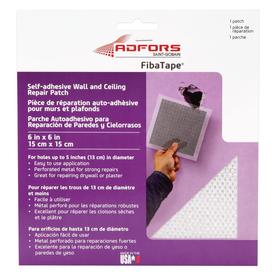 Prices, promotions, kinds, and availability might range. Our native shops do not honor on-line pricing. Prices and availability of services are subject to change with out notice. Errors can be corrected where found, and Lowe’s reserves the proper to revoke any acknowledged supply and to appropriate any errors, inaccuracies or omissions together with after an order has been submitted.
Prices, promotions, kinds, and availability might range. Our native shops do not honor on-line pricing. Prices and availability of services are subject to change with out notice. Errors can be corrected where found, and Lowe’s reserves the proper to revoke any acknowledged supply and to appropriate any errors, inaccuracies or omissions together with after an order has been submitted.
Then I measured the size of the opening and transferred the measurement onto the entrance aspect of the piece of drywall. However, I’m not knowledgeable drywall finisher, so it works best for me to sand until I just barely start to hit the paper on the primary sand solely. That approach I can see where I’m at, and I know I do not have a whole lot of extra mud earlier than applying the second coat. Now you need something to screw your drywall patch into. If you didn’t expose a stud, no problem. Use a scrap piece of wood and affix it into the outlet. Soft wooden like pine is great so you probably have just a little left over baseboard or a thick paint stick, that works completely! The subsequent steps are to wash off any rough spots on the sides of the field, to wash up the corners with a knife so that they are good and square and to take away any lumps and bumps on the floor of the drywall across the hole.
Moisten the patch. I use a moist rag to moisten the back aspect of the paper 7. Once the patch is in place, this will make it easier to force excess mud out from behind the paper. Otherwise it’s possible you’ll end up creating some humps and bumps that will telegraph by way of the patch later. After urgent the paper down into the mud with my fingers, I took my broad knife, and pressed firmly sufficient to squish as a lot mud as doable out from behind the patch, so it was as flat as attainable. I was cautious to not tear the paper. Patching with new drywall isn’t uncommon. The principal thing is that you just want to get the right measurement drywall for the patch. The article ‘ Drywall Sizes ‘ provides you some tips about doing that.
Since this primary patch was on my back splash, I wanted to reinforce it in case I determined to put up tile in some unspecified time in the future. I did not want to pop this patch back out when pressing on the tile. I additionally would do that subsequent step if I were patching in an space that may take some further abuse like a baby’s room or a predominant hallway. I selected not to do this next step on my other two patches because of their protected areas. Peel away the wedges. Snap the scored cuts to separate the wedges, then peel the gypsum and backing away from the face paper three. Be cautious to go away the face paper intact and clean off any gypsum that sticks to the paper in order that there are not any lumps or bumps alongside the perimeter of the remaining circular piece of gypsum.
Cut the patch to measurement. I wish to trim the patch down to dimension after I drill the outlet as a substitute of earlier than as a result of it’s easier to stabilize a larger piece of scrap drywall whereas drilling. Once the hole is drilled, I score and snap the scrap to create a sq. patch, making sure to leave 1 ½ to 2 inches of material throughout the outlet. It does not need to be good, so just eyeball the cuts. Drill a hole within the drywall scrap. Flip the drywall over so the back aspect is up, then use a hole saw to drill most of the method (but not all of the method) by way of the drywall 1. Use a gap saw that’s slightly bigger than the outlet you want to patch. Because I’m patching two holes, I’m use two completely different gap noticed diameters: 2 inches for the small patch and four ½ inches for the large patch. To cut drywall, use a straight edge and utility knife to score the front paper. You’re not making an attempt to chop by way of the drywall, simply the paper.